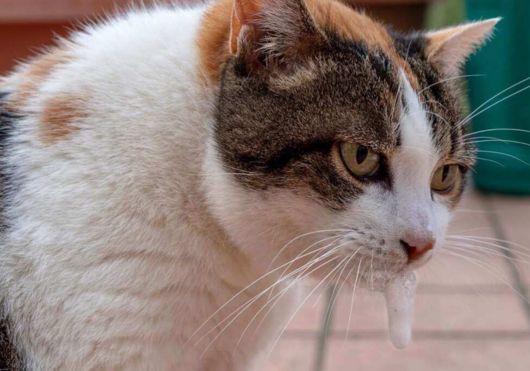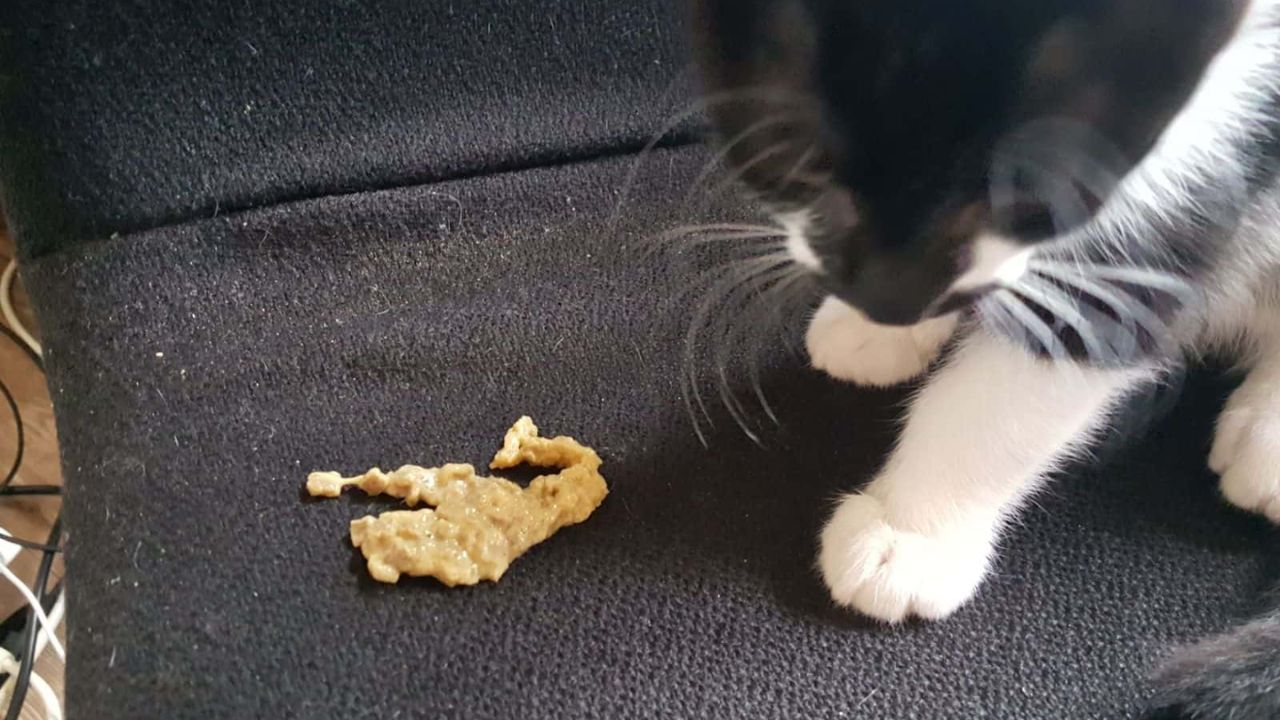Cats sometimes vomit, and this is normal. While you might clean it up and forget about it, you should look at the color first. The Cat Vomit Color can show if it’s sick, and our color guide below will help you understand what it means. This will help you know if you need to rush to the vet or if your cat has a minor stomach issue.

Importance of Checking the Color of Cat Vomit
If your cat vomits occasionally, it’s usually not a problem. However, frequent vomiting might mean your cat has a serious health issue, such as:
- Viral infections
- Liver or kidney failure
- Parasites
- Pancreatitis
- Inflammatory Bowel Disease (IBD)
- Neurological disorders
- Obstruction in the bowel
The color and frequency of your cat’s throw-up can tell you if there’s a health problem. Watch for other warning signs, such as not eating, being tired, or losing weight.
Paying attention to these signs will help you know when it’s time to take your cat to the vet.
Cat Vomit Color Chart
| Vomit Color | Meaning |
| Clear vomit | Clear vomit usually means your pet drank too much water. While this may seem harmless, if it happens often, see a vet. Your pet might be extra thirsty due to health issues like diabetes. |
| White foam | White foamy vomit means your pet’s stomach or intestines are irritated, but their stomach is empty. Watch your pet for other signs they might be sick. |
| Yellow vomit | Yellow vomit contains bile and happens when your pet hasn’t eaten in a while. This is usually not serious unless your pet is also behaving differently than normal. |
| Blood in vomit | If you see blood in your cat’s throw-up, it could mean they have a stomach ulcer or blood clotting problem from being sick or exposed to harmful substances. If your cat has thrown up many times, the blood might just be from an irritated throat or stomach. Either way, you should have a vet check your cat. |
| Green vomit | Green throw-up usually means it contains bile, which happens when cats throw up with an empty stomach. It could also mean your cat ate plants. This isn’t usually serious unless your cat shows other signs of being sick. |
| Brown vomit | Brown throw-up is usually just brown cat food that wasn’t properly digested, often because your cat ate too quickly. But if it looks like coffee grounds or is very dark brown, it might contain blood. If you think there’s blood in it, take your cat to the vet. |
Frequently Asked Questions
Cat parents tend to have plenty of questions about their pets throwing up. Here are just a few.
How Are Acute and Chronic Vomiting Different?
Sudden vomiting usually lasts one or two days, while ongoing vomiting happens regularly, sometimes daily. Both types are worrying, especially when your cat also seems tired or stops eating.
Should I See My Vet if My Cat Vomits?
Call your vet if you notice blood in the vomit if your cat seems sick or in pain, or if they throw up multiple times in one day or keep vomiting for several days.
How Will My Vet Treat My Cat’s Vomiting?
Treatment will depend on what’s causing the vomiting. Some causes, like diabetes or digestive problems, need medicine. If your cat’s food is the problem, switching to a different food might solve it.
Some cats need bland food and time, while others need blood tests, fluids, and imaging diagnostics.
What’s the Difference Between Vomit and a Hairball?
Hairballs and vomit look different. Hairballs are long and thin, like a cigar, and mostly contain hair with some food and maybe a little bile. Vomit is mostly liquid and might have a small amount of hair in it.
What Should I Do to Help My Cat When It’s Vomiting?
If your cat is throwing up, watch for other symptoms and how bad it is. Then take them to the vet. While there’s not much you can do at home since cats can’t take regular medicine, you should avoid giving them food or water for a few hours after they throw up.
But you can help prevent your pet from throwing up in the first place.
- Try to slow your cat’s eating since eating too quickly can result in vomiting.
- Keep poisonous items far away from your pet (and remember that some items, such as plants or foods, could be toxic to the cat that you wouldn’t suspect).
- Keep up with regular deworming and vaccinations.
Final Thoughts
When your cat throws up, checking the vomit’s color can help you decide if it’s serious or just a one-time thing. Pay attention to how often they throw up and look for other signs of sickness, like not eating or being tired. If you’re worried about your cat, take them to the vet for a checkup. To help prevent vomiting, make sure their food agrees with them and that they’re not eating too fast.








